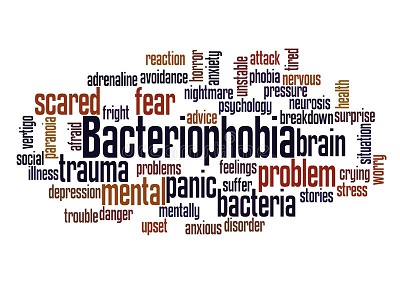
The medical establishment claims that sexually transmitted diseases are a significant worldwide problem; as indicated by the June 2019 WHO fact sheet entitled Sexually transmitted infections (STIs) that states,
“More than 1 million sexually transmitted infections (STIs) are acquired every day worldwide.”
The reference to these diseases as ‘infections’ is based on the idea that they are caused by ‘germs’ of one kind or another, as demonstrated by the statement in the fact sheet that,
“More than 30 different bacteria, viruses and parasites are known to be transmitted through sexual contact. Eight of these pathogens are linked to the greatest incidence of sexually transmitted disease. Of these 8 infections, 4 are currently curable: syphilis, gonorrhoea, chlamydia and trichomoniasis. The other 4 are viral infections which are incurable: hepatitis B, herpes simplex virus (HSV or herpes), HIV, and human papillomavirus (HPV).”
The problem with these statements is that the ‘germ theory’ remains unproven; in other words, there is, and never has been, any genuine scientific evidence that any ‘germ’ is the cause of any disease, including those claimed to be transmitted sexually. This is discussed in detail in our book, What Really Makes You Ill? Why Everything You Thought You Knew About Disease Is Wrong, in which we include reference to the work of many physicians and scientists who have recognised this fact. For example, in his book entitled The Hygienic System: Vol VI Orthopathy, Herbert Shelton cites the words of Dr Beddow Bayly MD MRCS LRCP, who wrote in the June 1928 edition of London Medical World that,
“I am prepared to maintain with scientifically established facts, that in no single instance has it been conclusively proved that any microorganism is the specific cause of a disease.”
This means that even if ‘germs’ were transferable, which they are not, they have never been proven to cause people to become ill.
Four of the diseases listed by the WHO, namely syphilis, HPV, hepatitis and HIV/AIDS, are discussed in some detail in our book, in which it is shown that they are not the result of infection by any pathogenic microorganism. This article will therefore focus on the other diseases listed by the WHO, namely gonorrhoea, chlamydia, trichomoniasis and herpes, in order to show that they too are not caused by pathogenic microorganisms.
The WHO states that these four diseases are ‘known to be transmitted through sexual contact’, from which people may assume that this is a proven fact; but this would be a mistaken assumption. No test is ever conducted to determine whether any germ ‘found’ in one person had been transferred to them by another person during sex. The only tests that are used are ones that claim to find an ‘infectious agent’ or an antibody to that ‘agent’; but merely finding a ‘germ’ or an ‘antibody’ does not provide proof that they caused the disease the person is claimed to be suffering from.
The refutation of the idea that any ‘germ’ is the cause of any of these four STIs will inevitably raise the question: what does cause these diseases, if not germs?
This question is often asked on the basis of an underlying assumption that each ‘disease’ has a single causal agent or factor; but this too is a mistaken assumption. Suitable responses to the question of what does cause them can be found by examining the diseases in more detail.

Gonorrhoea is described as a sexually-transmitted disease that is caused by the bacterium Neisseria gonorrhoea; a diagnosis of this condition involves tests to detect the presence of these bacteria. Interestingly, however, the Mayo Clinic web page entitled Gonorrhoea states that,
“In many cases, gonorrhoea infection causes no symptoms.”
Most symptoms of ‘gonorrhoea’ occur in the genital area, but they can also occur in other body organs, including the eyes, throat and joints, which is highly anomalous for a disease that is said to be the result of sexual activity.
On the basis that the condition is claimed to be caused by a bacterium, the recommended treatment involves antibiotics, which, according to the Mayo Clinic, include injected ceftriaxone or oral azithromycin. In common with all antibiotics, these ‘treatments’ are associated with ‘side effects’, a term that merely refers to unintended effects, but they are clearly direct effects as they would not have occurred if the patient had not taken them.
The Chlamydia – CDC Fact Sheet states that,
“Chlamydia is a common STD that can infect both men and women. It can cause serious, permanent damage to a woman’s reproductive system. This can make it difficult or impossible for her to get pregnant later on.”
By comparison with the CDC’s description, the NHS web page entitled Chlamydia states that,
“Most people with chlamydia do not notice any symptoms and do not know they have it.”
The NHS page lists some of the possible symptoms, which include: pain when peeing; unusual discharge from the vagina, penis or bottom; in women, pain in the tummy, bleeding after sex and bleeding between periods; in men, pain and swelling in the testicles. This condition is claimed to be caused by the bacterium Chlamydia trachomatis; the recommended treatment for which inevitably involves antibiotics, which, according to the NHS, include azithromycin and doxycycline.
Trichomoniasis is claimed to be caused by a parasite; as indicated by the Trichomoniasis – CDC Fact Sheet that states,
“Trichomoniasis (or “trich”) is a very common sexually transmitted disease (STD). It is caused by infection with a protozoan parasite called Trichomonas vaginalis. Although symptoms of the disease vary, most people who have the parasite cannot tell they are infected.”
The page also states that,
“About 70% of infected people do not have any signs or symptoms. When trichomoniasis does cause symptoms, they can range from mild irritation to severe inflammation.”
With respect to treatment, the fact sheet states that,
“Trichomoniasis can be treated with medication (either metronidazole or tinidazole). These pills are taken by mouth.”
These drugs are both antibiotics, even though the pathogen is claimed to be a parasite, not a bacterium.
The May 2020 WHO fact sheet entitled Herpes simplex virus states that herpes is caused by the herpes simplex virus but that there are 2 types of this virus, namely HSV-1 and HSV-2, and that,
“Both oral herpes infections and genital herpes infections are mostly asymptomatic or unrecognized but can cause symptoms of painful blisters or ulcers at the site of infection, ranging from mild to severe.”
Herpes is one of the diseases claimed to be incurable, but is nevertheless regarded as treatable, as indicated by the Genital Herpes – CDC Fact Sheet, which states that,
“There is no cure for herpes. Antiviral medications can, however, prevent or shorten outbreaks during the period of time the person takes the medication. In addition, daily suppressive therapy (i.e. daily use of antiviral medication) for herpes can reduce the likelihood of transmission to partners.”
One of the most interesting features common to all four of these diseases is that most cases of infection are ‘asymptomatic’, which is a complete contradiction of the idea that infection with the putative ‘germ’ is synonymous with a disease that can be identified, at least to a certain extent, by the symptoms presented by the sufferer.
The absence of symptoms in these cases means that there can be no disease, despite the presence of the alleged pathogen. This situation violates the first of Koch’s Postulates that were formulated in the late 19th century to establish the existence of a causal relationship between a ‘pathogen’ and the disease it is claimed to cause. The presence of the pathogen in the absence of disease or the absence of the pathogen in the presence of disease were both recognised to violate the first Postulate and to therefore represent a failure to establish a causal relationship.

The failure of the ‘germ theory’ to explain these diseases does not mean that they cannot be explained, but it should be emphasised that ‘asymptomatic infections’ are not synonymous with disease. A person without symptoms is not someone who is ill with a disease.
For those with symptoms, however, it is important to explain that there is a reason that the body produces symptoms; they do have a purpose. A clear explanation is provided by TC Fry in the book entitled The Cruel Hoax Called Herpes Genitalis, which states that,
“The diseases that we attribute to viruses are actually body created eliminative crises to eject forcibly toxic matters that have accumulated. Uneliminated wastes are life-sapping and deadly.”
Although he refers to ‘viruses’, the same applies to all diseases claimed to be caused by an ‘infectious agent’, whether a virus, bacterium, parasite or fungus.
Some of the symptoms common to all four diseases, such as inflammation, pain, discharge and eruptions, for example, clearly represent processes of elimination.
The most important point is that the symptoms do not appear in the genital area as the result of sexual contact, because these ‘pathogens’ have been found in people and children who have never had sexual intercourse, so the ‘germs’ could not have been transmitted as the result of sexual contact. This is confirmed by TC Fry who states with reference to herpes that,
“There is no ‘virus’ behind the disease. What is involved is an accumulation of toxic materials that the body has elected to eliminate through lesions and sores in the genital area.”
He makes the same comment with respect to bacteria, about which he states,
“They do not cause disease — they help us eliminate the toxic materials that could clog and slowly destroy us.”
He also explains the reason that the symptoms appear in the genital area, which is that,
“The body selected the site because it was the easiest vicarious outlet, not because of sex relations. When millions of our youngsters, spinsters, and bachelors develop the disease you can be sure that it was not due to contagion.”
Furthermore, he states that these conditions do not need to be treated with toxic antibiotics and antiviral medications,
“Herpes and other acute diseases can be quickly overcome (in days) by simple detoxification measures…”
There is, however, another aspect of sexually-transmitted diseases that needs to be discussed and this is that the symptoms may occur for another reason. The claim that pathogens can be transmitted through sexual contact fosters the idea in some people that sex is ‘dirty’ or ‘bad’ and that ‘disease’ is the just punishment for sexual intercourse. This idea can, and often does, inculcate a feeling of guilt about sex that can have a very real detrimental effect on a person’s physical health.
There is an abundance of evidence that our thoughts, ideas and beliefs can play a significant role in our health. This is demonstrated by the well-known phenomenon of the placebo effect, which is a beneficial effect that occurs from an ‘inert’ substance; in clinical trials and studies, these inert substances are usually sugar pills.
There is, however, a lesser-known phenomenon called the nocebo effect, often regarded as the opposite of the placebo effect, in which a person experiences ‘side effects’ even though an ‘inert’ substance was taken rather than the real drug. But the nocebo effect is not restricted to this type of experience and it can have a far more detrimental impact on a person’s health and well-being.
An August 2013 article entitled The Nocebo Effect: Negative Thoughts Can Harm Your Health on the Psychology Today website, refers to the documented evidence of the power of the nocebo effect and states,
“The literature shows that patients believed to be terminal who are mistakenly informed that they have only a few months to live have died within their given time frame…”
It may be believed that this is a demonstration of the accuracy of the physician’s prognosis; however, the article dispels this notion, as the sentence continues,
“…even when autopsy findings reveal no physiological explanation for the early death.”
The article refers to this phenomenon as ‘medical hexing’. Although doctors are acting according to their medical training and genuinely believe they are providing patients with ‘information’ about their condition, the article explains that they are instilling in the minds of their patients a ‘belief’ about their condition, which, if they accept it, will often become a self-fulfilling prophecy.
In contrast, there are other people who completely reject the prognosis and defy their doctor’s belief by not succumbing to the ‘disease’ and by living a long and healthy life. This can also be applied to the belief that ‘disease’ can be sexually transmitted, which, as shown in this article, is not based on scientific evidence. In other words, there is no such thing as a sexually-transmitted disease.
Dawn Lester
21st July 2020
References:
LESTER, D. & Parker D. – What Really Makes You Ill? Why Everything You Thought You Knew About Disease Is Wrong
SHELTON, HM, Hazard, SM & Fry, TC – The Cruel Hoax Called Herpes Genitalis
SHELTON, HM – The Hygienic System: Vol VI Orthopathy
WHO fact sheet June 2019 Sexually transmitted infections (STIs)
https://www.who.int/en/news-room/fact-sheets/detail/sexually-transmitted-infections-(stis)
Mayo Clinic web page – Gonorrhoea
https://www.mayoclinic.org/diseases-conditions/gonorrhea/symptoms-causes/syc-20351774
Chlamydia – CDC Fact Sheet
https://www.cdc.gov/std/chlamydia/stdfact-chlamydia.htm
NHS – Chlamydia
https://www.nhs.uk/conditions/Chlamydia/
Trichomoniasis – CDC Fact Sheet
https://www.cdc.gov/std/trichomonas/STDFact-Trichomoniasis.htm
WHO fact sheet May 2020 – Herpes simplex virus
https://www.who.int/news-room/fact-sheets/detail/herpes-simplex-virus
Genital Herpes – CDC Fact Sheet
https://www.cdc.gov/std/herpes/stdfact-herpes.htm
The Nocebo Effect: Negative Thoughts Can Harm Your Health
https://www.psychologytoday.com/us/blog/owning-pink/201308/the-nocebo-effect-negative-thoughts-can-harm-your-health
